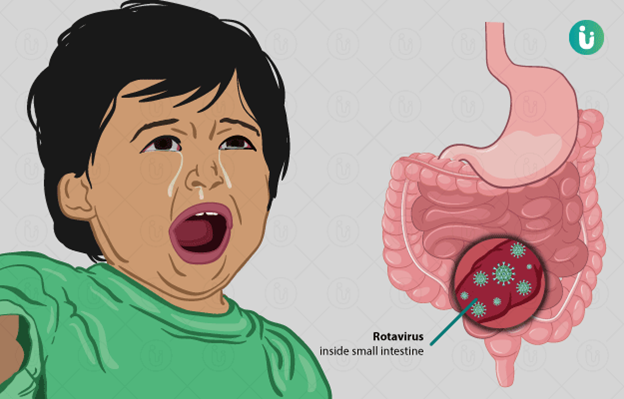The viral pathogen that frequently causes acute diarrhea in young children is:
Rotavirus.
Salmonella organisms.
Shigella organisms.
Giardia organisms.
The Correct Answer is A
The correct answer is choice A: Rotavirus.
Choice A rationale:
Rotavirus is a viral pathogen that frequently causes acute diarrhea in young children. It is highly contagious and is responsible for a significant portion of severe diarrhea cases worldwide. Rotavirus infections are most common in infants and young children, and they can lead to dehydration, especially in developing countries where access to clean water and proper sanitation might be limited.

Choice B rationale:
Salmonella organisms can cause food poisoning and gastrointestinal infections that lead to diarrhea. However, they are more commonly associated with bacterial infections rather than viral-induced acute diarrhea.
Choice C rationale:
Shigella organisms are also bacterial pathogens that cause diarrhea, specifically bacillary dysentery. While they can cause severe diarrhea, they are not the viral pathogen typically responsible for acute diarrhea in young children.
Choice D rationale:
Giardia organisms are parasites that can cause gastrointestinal infections leading to diarrhea. However, they are not viruses, and they are less commonly associated with acute diarrhea in children compared to rotavirus.
Nursing Test Bank
Naxlex Comprehensive Predictor Exams
Related Questions
Correct Answer is C
Explanation
The correct answer is Choice C: Measure abdominal girth.
Choice A rationale:
Taking vital signs, including blood pressure, is important in assessing the overall health status of a child, but it might not provide specific information about a probable intussusception. Blood pressure is not typically affected in a way that directly relates to intussusception.
Choice B rationale:
Auscultating for bowel sounds is an important assessment technique in various gastrointestinal conditions, but it may not be the most appropriate immediate action when dealing with a probable intussusception. While bowel sounds might be diminished or absent in intussusception, the priority should be on assessing other signs and symptoms.
Choice C rationale:
Measuring abdominal girth is an essential nursing action when a child with a probable intussusception has a normal, brown stool. Intussusception is the telescoping of one segment of the intestine into another, often leading to bowel obstruction. Abdominal distension or girth measurement can provide valuable information about the progression of the condition and potential obstruction.
Choice D rationale:
Notifying the practitioner is an important step, but it might not be the most immediate action required. Assessing and monitoring the child's condition should be the initial response to gather more information before notifying the practitioner.
Correct Answer is B
Explanation
The correct answer is choice B. A feeling of fullness in the ear.
Choice A rationale:
Nausea and vomiting are not typical symptoms of chronic otitis media with effusion (OME). OME involves fluid accumulation in the middle ear without signs of acute infection. It is commonly seen in children and may cause mild hearing impairment and a feeling of fullness in the ear.
Choice B rationale:
A feeling of fullness in the ear is a common symptom of OME. The fluid accumulation in the middle ear can lead to a sensation of pressure or fullness, as well as mild hearing loss. This can impact a child's ability to hear and communicate effectively.
Choice C rationale:
Severe pain in the ear is more characteristic of acute otitis media (AOM), which is an infection of the middle ear with signs of inflammation. In OME, pain is typically not a prominent symptom unless there is an underlying AOM episode.
Choice D rationale:
Fever as high as 40°C (104°F) is not a typical symptom of OME. OME is generally a chronic condition without acute signs of infection such as fever. However, if a fever is present, it might indicate a concurrent infection that needs further evaluation.
Whether you are a student looking to ace your exams or a practicing nurse seeking to enhance your expertise , our nursing education contents will empower you with the confidence and competence to make a difference in the lives of patients and become a respected leader in the healthcare field.
Visit Naxlex, invest in your future and unlock endless possibilities with our unparalleled nursing education contents today
Report Wrong Answer on the Current Question
Do you disagree with the answer? If yes, what is your expected answer? Explain.
Kindly be descriptive with the issue you are facing.
